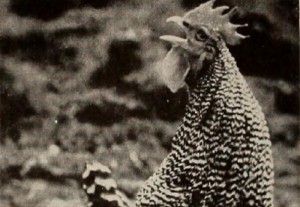
"There is an easy, effortless quality about Backyard Horizons, by Roy C. Wilcox, which tends to belie the fine competence of its work with telephoto lenses and extension tubes. The birds, bugs, bees and rabbits which parade across the horizon of the Wilcox pastures seem to be friends of the family — and they are treated as such in the unpretentious narrative which accompanies them. The sound on film track, combining simple musical selections and a restrained volume of comment, was itself produced by Mr. Wilcox, and it records his own voice, pleasingly." Movie Makers, Dec. 1946, 486, 488.
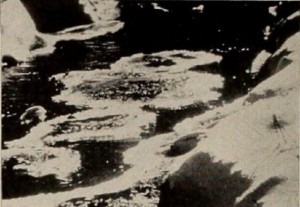
"Joseph J. Harley, filmer of nature in her many moods and an understanding lover of great music, brings a subtle and beautiful study of ice, snow and wintry waters, which is presented with the recorded music of On the Shores of Sorrento, by Richard Strauss. Here was a problem of finding music that would meet the mood of the footage and of then so editing the latter that the climaxes, both musical and pictorial, would integrate. Although, of course, Sorrento lacks the ice and snow of Mr. Harley's film, yet Strauss's tone poem coalesces amazingly with the sparkling Kodachrome of winter which has been joined to it. Mr. Harley has elected to do something that, had it been done a quarter century ago, would have made cinematic history. In doing it, he has matched the best of the past and has added a new brilliance from his own abundant creative imagination." Movie Makers, Dec. 1946, 488.
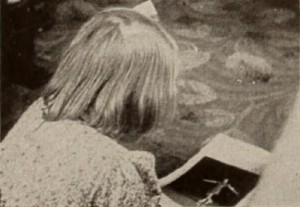
"Victor E. Pye, using his family as the principal actors in a sincere and competent photoplay, brings us the flavor of family life in far away Australia. With a sure cinematic sense, he opens Inspiration with a moving dolly sequence which carries you into the house directly to the star of the film. With creditable economy of footage and compelling acting and directing, Mr. Pye tells a simple tale of a once crippled child returned to health through the inspiration of a famous figure skater — herself a former "polio" victim. There are also several scenes from which it becomes obvious that the movie maker has profited from viewing theatrical productions with his mind on his own filming. Suave and sensitive, Inspiration becomes moving and believable as the plot unfolds." Movie Makers, Dec. 1946, 488.
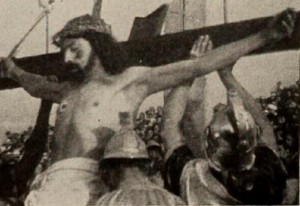
"It is a platitude that there is more in Mexico than meets the eye. In Quaint Old Mexico, however, Guy Nelli proves that there is far more in Mexico than usually meets the camera. Mr. Nelli presents the gradual awakening of Mexico, as the farmers drive their produce to market, with a startling sense of early morning atmosphere; market scenes are developed lucidly and effectively. The high peak of the film is reached with a most remarkable sequence of religious festival shots, as virtually an entire village re-enacts the Stations of the Cross. The intense religious emotion evident in these scenes has rarely been caught for the screen. Mr. Nelli's film is outstanding for its fresh approach and, above all, for the natural and casual quality of its shots." Movie Makers, Dec. 1946, 488.
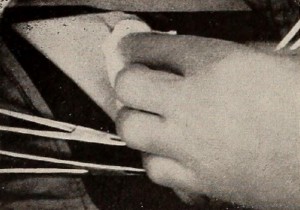
"Extreme clarity and freedom from the shadows frequently encountered in medical films mark the technical details of the surgery shown in Dr. Vincent Vermooten's Repair of an Indirect Inguinal Hernia. Dr. Vermooten was, from the beginning, acutely conscious of the problems involved in bringing the proper light sources to bear upon a complex operation in which every bit of motion possesses great significance. To make certain of a steady and complete lighting scheme, he constructed a special platform above the operating table. Floodlights, closely bunched about the platform, left no possibility of inadequately lighted areas. The result is a record of an operation, masterfully pointed up by lighting, which should prove invaluable for instructional purposes." Movie Makers, Dec. 1946, 488.
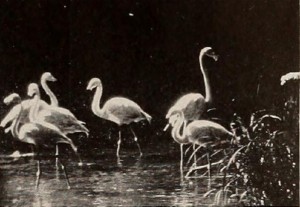
"By a clever editorial feat, Charles H. Benjamin has transformed a series of animal scenes which he filmed at New York City's Bronx Zoo into a pseudo travelog of the African game belt. He achieved this effect by simply cutting shots of heavily wooded streams into footage of the uncaged animals in the famous zoo, and the illusion is pointed up by some striking title frames. Mr. Benjamin's camera work matches his editorial insight, for his exposures and composition are first rate. His use of back lighting gives his shots of flamingoes and drowsing lions a brilliance that puts them far above the usual run of animal pictures." Movie Makers, Dec. 1946, 488.
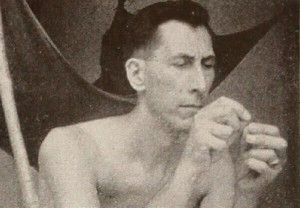
"It is generally accepted by the less moronic elements that Hollywood's version of life in the army not only missed the point but overlooked it completely. Reginald McMahon, a hardy private first class during the war, has compensated greatly for Hollywood's sins in his Sweating It Out, a clever film recording the period between V-J day and his return from overseas. Mr. McMahon was with the 24th Combat Mapping Squadron, stationed at Gushkara, India. He was in a position to show what a hot, boring climate does to military stiffness and the blithe American temperament; and he has done so. Barracks life becomes very real in his hands, with its essential lack of glamour, its endless small detail and its everlasting poker games. The negative aspects of army life at an outpost — K.P. and guard duty — come in for their proper share of bitter comment. Mr. McMahon is to be thanked for recording the trivia that make up army life in a way that makes one almost nostalgic for them." Movie Makers, Dec. 1946, 488-489.
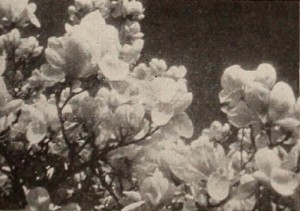
"It is spring in Brooklyn, and Leo J. Heffernan has found a multitude of trees there. He opens the film with a sombre shot of New York's waterfront and skyline, to indicate the tense activity of a large city. A title suggests that those who live in the midst of this turmoil can find solace not far away. The film proceeds to the bounteous display of flowering trees in a large public park. Glowing shots of heavily laden branches against blue sky are interspersed with scenes of Sunday strollers wandering through shaded walks and falling petals. Mr. Heffernan has used to good effect his fine technical skill, and his color transitions between scenes are smoothly accomplished. Trees That Grow in Brooklyn is accompanied by a rhymed narrative written especially for the film by Mr. Heffernan." Movie Makers, Dec. 1946, 489.
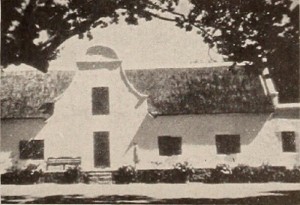
"The solid splendor of Dutch colonial existence in South Africa is attractively recreated in White Gables, by G. Brian McIntosh. Moving out from Capetown, the film carries one swiftly over the barrier crags of Table Mountain into the fertile valley beyond. Here, surrounded by its flowers and fields of grape, stands Groot Constantia, the great and graceful manor house built by Governor Simon van der Stel in 1685. Mr. Mcintosh presents it with sympathy, imagination and skill. Scene flows into scene, sequence into sequence, with a suave progression which could have been achieved only by the most cunning advanced plan. A gracious lady in 17th Century dress moves through the terraced grounds on the gentle errands of that leisured age. White Gables is a bright and glowing evocation of mood and manner which now are history." Movie Makers, Dec. 1946, 489.
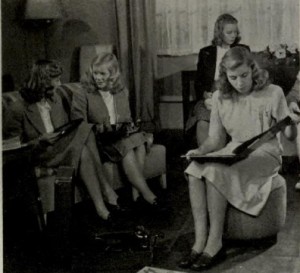
"Sitting Right, a lively, attractive argument for good sitting posture, directs its message to the 'teen aged young ladies of America. Shrewdly, its producers — Grant, Flory and Williams — have brought complete authenticity to this possibly unpopular thesis by presenting it throughout in the playing of actual (and average ) high school girls. These same girls, adds John Flory, the director, even contributed many of the situation suggestions which are woven into the swiftly moving message of the film. The production is marked by fine lighting and camera work, heightened in their effect by a modern and refreshing treatment of the narrative track." Movie Makers, Dec. 1946, 490.
Total Pages: 299